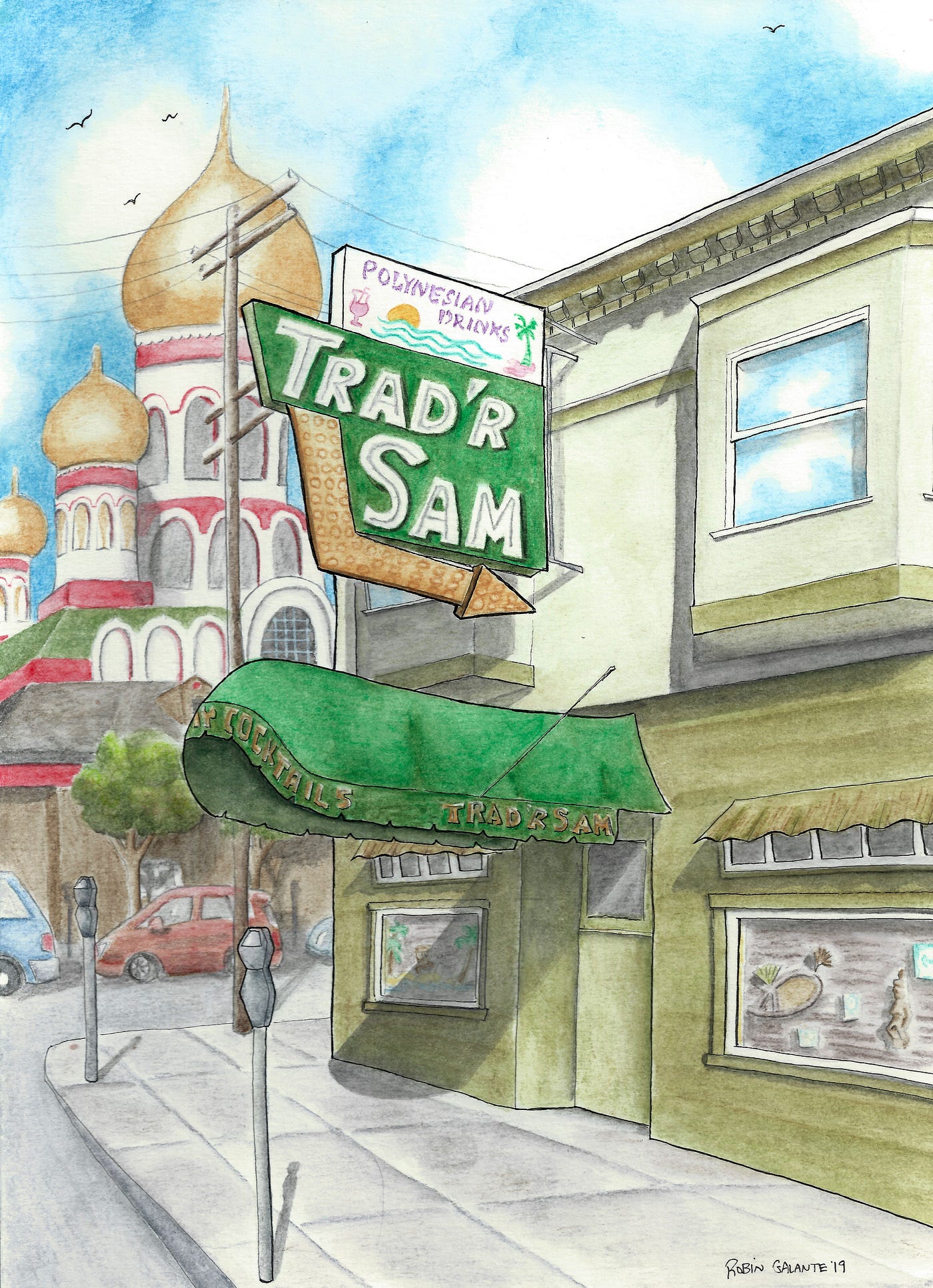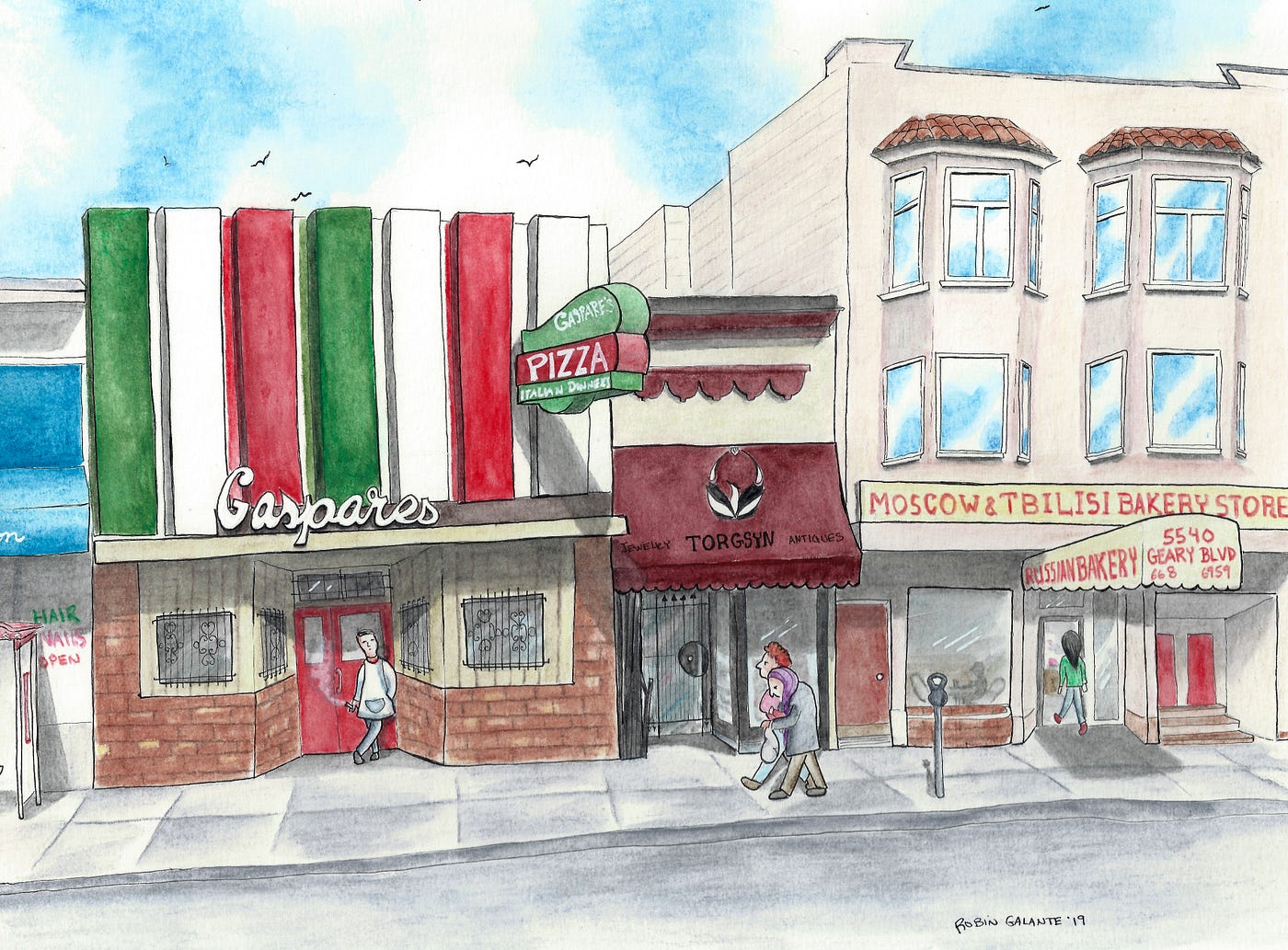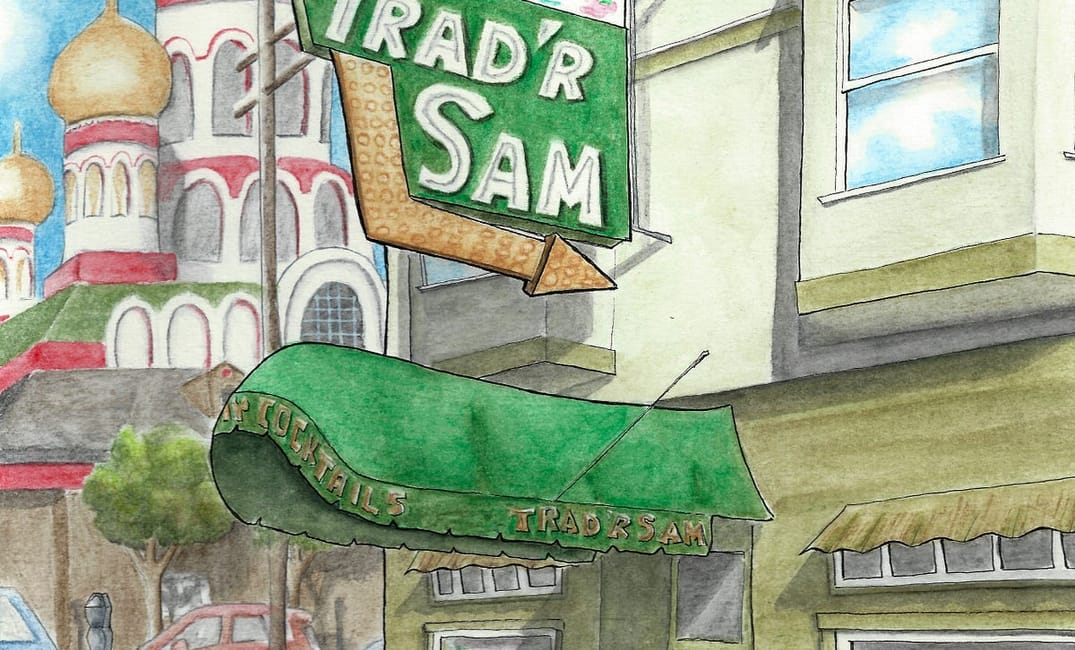
It was a clear spring day in 2004. I had just been fired from my job as an administrative assistant. Over the course of two weeks of employment, my boss, who was was initially a jovial fellow, became moody and difficult to work with. One day he invited me to a strip club for lunch — I declined. The next afternoon, he handed me a check and told me not to come back while mumbling something about my being a “slow learner.”
I had just moved to San Francisco the year before and had no idea what to do. The day after I was fired, I spent the morning in my little studio on 28th Avenue in the Richmond District, robotically clicking through job listings on Craigslist.
I needed a change of scenery, so I decided to take a walk to Geary Boulevard, three blocks north of my apartment. What I had seen of Geary, mostly through the windows of the 38 Muni bus, didn’t exactly excite me. It was a wide, busy street lined with discount shops, gas stations, and a disproportionate number of mattress stores.
This grand, colorful building reaches toward the sky with spires of red, white, and green, topped with domes painted in 24-carat gold leaf that look like dollops of gilded meringue.
But as I walked, it became apparent that there was more to Geary than I thought. When I reached 27th Avenue, I found myself beneath a towering cathedral. Within a few short blocks, I’d passed an Irish pub called the Blarney Stone, Tommy’s Mexican Restaurant, Seakor Polish Delicatessen, and Khan Toke Thai House.
I bought a cup of coffee at Javacat, a cafe on the corner of 20th and Geary. Two old men shuffled past, gesticulating wildly and speaking with heavy Slavic accents. A young woman in impossibly high heels and leopard-print leggings strode behind them, her full lips painted hot pink. Two ladies with fiery red hair and thick fur-lined parkas stood in the crosswalk and talked to each other in Russian.
I forgot about my creepy boss and sudden unemployment. I’d found a place where I could forget where I was, even who I was, for a little while. I’d found Little Russia.

Little Russia spans the stretch of Geary Boulevard between 17th and 27th Avenues. This small Russian enclave was established in the early 1920s following the first significant wave of immigrants who came to San Francisco after the end of the Russian Civil War. A second wave came after World War II, when Russians living in China fled under the threat of a communist takeover. The fall of the Soviet Union and the Bay Area’s booming economy in the 1980s, 1990s, and early 2000s drove subsequent migrations that increased the population of Russian people in the city, many of whom settled in the Richmond District.
The most recognized landmark in Little Russia is the Holy Virgin Cathedral. Also known as the “Joy of All Who Sorrow,” the church was built in 1965 and is the largest Russian Orthodox cathedral outside of Russia. This grand, colorful building reaches toward the sky with spires of red, white, and green, topped with domes painted in 24-carat gold leaf that look like dollops of gilded meringue. It is wonderfully incongruous among the neighboring hardware stores and nail salons.
Despite its name, Little Russia is far from being exclusively Russian. The neighborhood is also home to Irish, Italian, and Chinese communities, to name a few. There is a breathtaking array of dining options here, from Korean barbecue spots to Chinese dim sum joints to Mexican restaurants to ’50s diners to Japanese hot-pot places, all nestled among Russian bakeries and tea rooms.

The neighborhood is so diverse, it can feel a little surreal at times. In the shadow of the majestic Holy Virgin Cathedral sits the oldest-running tiki bar in San Francisco, Trad’r Sam.
Around the same time when I discovered Little Russia, I went to Trad’r Sam with friends after dinner at Gaspare’s, an old-school Italian restaurant down the street. I ordered a fruity drink that arrived replete with a tiny umbrella and sat with one of my friends, Eric, while the others danced. At one point, Eric smiled at me, and I realized that I was attracted to him. Feeling suddenly shy and flustered by this turn of events, I abruptly left. I still remember him standing by the parking meter, waving dejectedly as I pulled away. If I could go back in time, I would tell him, “Don’t worry, I’ll be back. And in a few years, we’ll be married.”

When I told a friend who lives in the neighborhood that I was writing this story, he said, “Good. Capture Little Russia before it disappears.” Sadly, the many beloved mom-and-pop businesses have closed. Eliseevski Deli had a wide selection of meats, cheeses, and drinks; Troika Gifts sold gorgeous hand-painted bowls, vases, and figurines; Gastronom Deli was famous for great Russian comfort food—and kindness; and Javacat, the cafe I visited that day in 2004, was the perfect place at which to read, study, or just sit and watch Geary’s ongoing parade of neighbors and characters out the cafe’s big windows.
While some places have closed, Little Russia has not disappeared. Russian Renaissance Restaurant has been here since 1959, with walls adorned with rich, vivid paintings by Russian artists and a menu filled with home-style Eastern European cuisine. Three blocks away, there’s the Hermitage Banquet Hall, an event space with great food and live music. Red Tavern, one block over on Clement Street, opened in 2011 and serves home-style favorites such as borscht and stroganoff in a cozy setting. Aziza, a popular Moroccan restaurant that locals thought was closed for good, just re-opened its doors. And although it’s outside Little Russia proper, the popular Cinderella Bakery feels like an extension of the neighborhood, with authentic pastries, pirogis and entrees.
I come to this corner of the city frequently to run errands, feeling grateful that on my way to the post office or hardware store, I get to stroll past magnificent churches and fragrant bakeries. I buy Persian cucumbers at Royal Market and pickled cabbage at the New World Market. I wander through Europa Plus — a grocery store with vast collections of Russian DVDs, yellowed Russian paperbacks, nesting dolls, and, if you venture up the rickety metal stairs, an entire second floor dedicated to children’s books.
In Little Russia, I can get out of my head and disappear into the world around me, immersed in the sounds of voices speaking many languages. I am, for a few glorious moments, a traveler in the city I call home.







